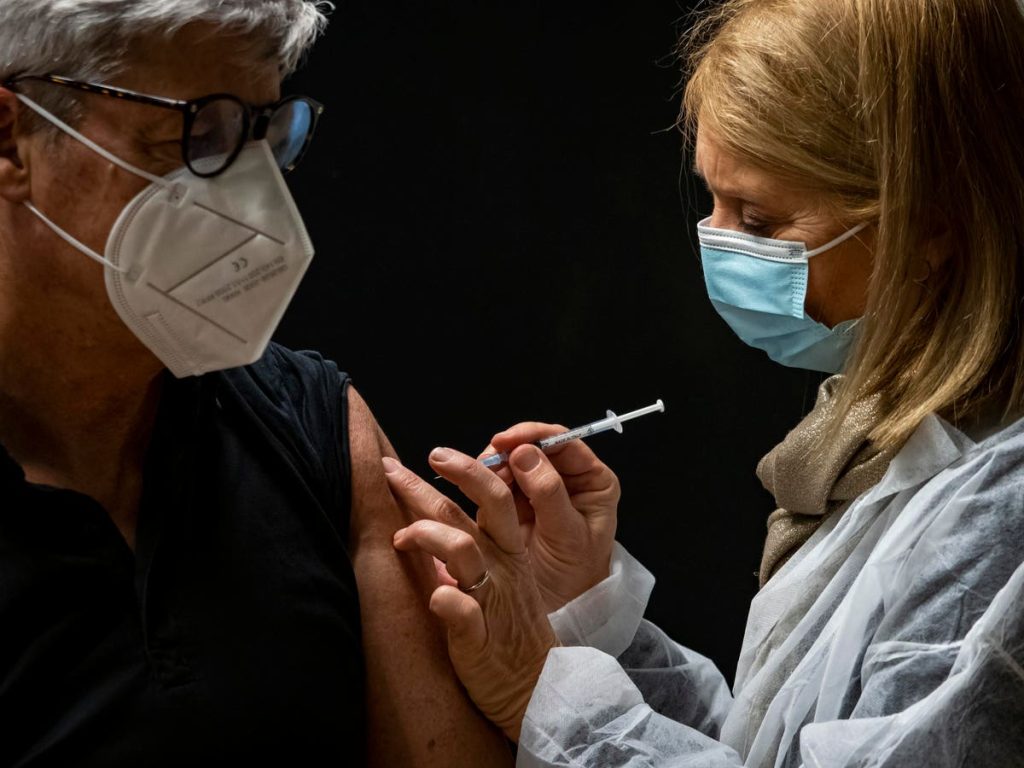Whether responding to a pandemic, epidemic or endemic disease threat, vaccines without vaccination save no lives.
The healthcare community leveraged existing vaccine platforms to quickly create and deliver safe and effective Covid-19 vaccine candidates less than one year from the start of the pandemic. But, despite clear cause for celebration, U.S. vaccination rates were modest at best and the impact of this scientific achievement was diminished. The aggressive U.S. Covid-19 vaccine roll-out coupled with a disappointing public uptake is a call-to-action for our medical and public health communities to understand why and to quickly develop and implement informed interventions.
The timing for this introspection and course correction could not be more pressing following the U.S. Food and Drug Administration vaccine advisory committee’s unanimous vote for future Covid-19 vaccines to contain a single XBB component and new vaccines to be available this fall.
The first Covid-19 vaccines became available in the U.S. under an Emergency Use Authorization regulatory pathway approximately one year after the first cluster of pneumonia cases were reported in China. At the time, how Covid-19 spread within populations, the virus’ propensity to mutate and the duration of vaccine-induced protection were not completely understood, leaving open the possibility that high-level population immunity could be achieved and the pandemic short-lived.
Covid-19 vaccination rates rose quickly but eventually slowed and stuttered. Today, approximately one-third of the U.S. population has not received a complete primary vaccination series (first two doses) and more than 80% have not received an updated (bivalent) booster vaccination. Yet between 250 to 500 Americans still die each week from Covid-19, according to June 10 data from the CDC.
Disinformation and misinformation about vaccine ingredients and far-fetched conspiracy theories contributed to decreased uptake. However, important and reasonable questions about acute and long-term vaccine side effects also made people wary. Questions about Covid-19 vaccine safety ultimately permeated discussions about other vaccines. As a result of this—and erratic reductions in vaccine accessibility—rates of vaccination for numerous diseases declined during the pandemic and outbreaks of vaccine-preventable diseases such as measles occurred. With most people having never experienced the fear associated with outbreaks of morbid and deadly diseases like polio or Ebola, making the case for Covid-19 vaccination based solely on avoiding hypothetical risks was no longer a compelling argument.
People also had concerns that vaccine effectiveness was quickly declining. The term “breakthrough infection” became all too familiar. As more people were infected, observations of the protective abilities of naturally acquired immunity also challenged the rationale for vaccination.
The occurrence of new and evasive SARS-CoV-2 variants were met with attempts to “boost” immunity by administering additional vaccine doses. Booster doses were implemented using original formulation vaccines first, but then variant-specific vaccines were tested and eventually a bivalent formulation targeting the original and more recently circulating strains (BA.4/.5) were recommended.
Older individuals were the most likely to be vaccinated, likely driven by their self-perceptions of increased risk for severe disease and death from Covid-19. Vaccine uptake decreased as the potential recipients’ ages decreased. Just as perceptions of increased risk drove older adults to get vaccinated, perceptions of decreased risk caused many younger people to forgo vaccination and most parents to pass on vaccinating their children. It’s not that these perceptions were incorrect, but the risks of Covid-19 in young people (e.g., inflammatory syndromes, long Covid-19 and very rarely death) were underappreciated. Further complicating the risk-benefit analysis of vaccination in this population were the significant effects of an “endless” pandemic (e.g., virtual learning and social isolation) and the evolving story of very rare vaccine side effects (e.g., heart inflammation) in young males.
Despite the clear clinical benefit of Covid-19 vaccination, the benefit is not the same for everyone. Those at low risk of a bad outcome from Covid-19 benefit less from vaccination. Covid-19 vaccines reduce the risk of severe disease, hospitalization and death but are less impactful in preventing infection or mild disease. Vaccination is associated with a reduced risk of long Covid-19 in some studies and is safe and beneficial in multiple special populations (e.g., pregnant women, immunosuppressed people). The benefits of immunity from natural infection may be on par with those from vaccination with original vaccine formulations, while hybrid immunity (infection plus vaccination) may offer greater protection than either alone.
The impact of disinformation and misinformation on individual beliefs and behaviors during the pandemic hinted that medical and scientific literacy among the general population was likely overestimated. The same can also be said about enclaves of medical and scientific professionals. Most people are not aware how vaccines are made, tested or the intense scrutiny given to every step of the process before regulatory approval or authorization for use is granted. As a result, the public’s standards for vaccine safety and effectiveness were impossible to meet.
Validating the credibility of information sources during the pandemic was also a challenge for the public writ large. The result was a considerable amount of “noise” introduced into important and consequential Covid-19 treatment and prevention discussions. Clinicians faced threats of litigation or violence for refusing to prescribe various ineffective medications promoted on social media. Previous “known knowns” in science and medicine were now blurred and in question.
Scientists and clinicians attempted to educate and inform the public using a variety of methods. But communicating medical and scientific information at the population level is a much different skillset than communicating to individual patients or families. Engaging with the press and media was also a challenge for many doctors and scientists. Ineffective, poorly worded messaging confused people and pushed them to access information from less credible sources.
Shakespeare may have coined the phrase, “Expectation is the root of all heartache,” but the poor management of public expectations when it came to Covid-19 vaccine safety and benefits was a stunning exemplar. Unrealistic expectations of 100% vaccine safety and 100% effectiveness needed to be managed and placed in the context of the ongoing health threat. Unfortunately, we fell short in this task and eroded public trust in the process.
As efforts are underway to improve next generation Covid-19 vaccines, the healthcare community should also improve how we communicate and discuss vaccines with the intended recipients. Clinicians should embrace the new normal of an increasingly vaccine-hesitant population and have clear messages regarding the risks and benefits of vaccination.
Clinicians, scientists and public health professionals need to recognize there are highly motivated and organized individuals who want a world without vaccines. Credible information sources need to be readily accessible, and sources of blatant misinformation need to be held accountable.
Scientists and clinicians need communications and media training, and local and regional public health entities need to assert more control in communicating with their communities and be less reactionary to centralized messaging.
Finally, the public’s expectations of vaccine safety and effectiveness need to be managed, so they understand the individual’s vaccination experience is as individual as their choice to be, or not be, vaccinated.
Read the full article here










